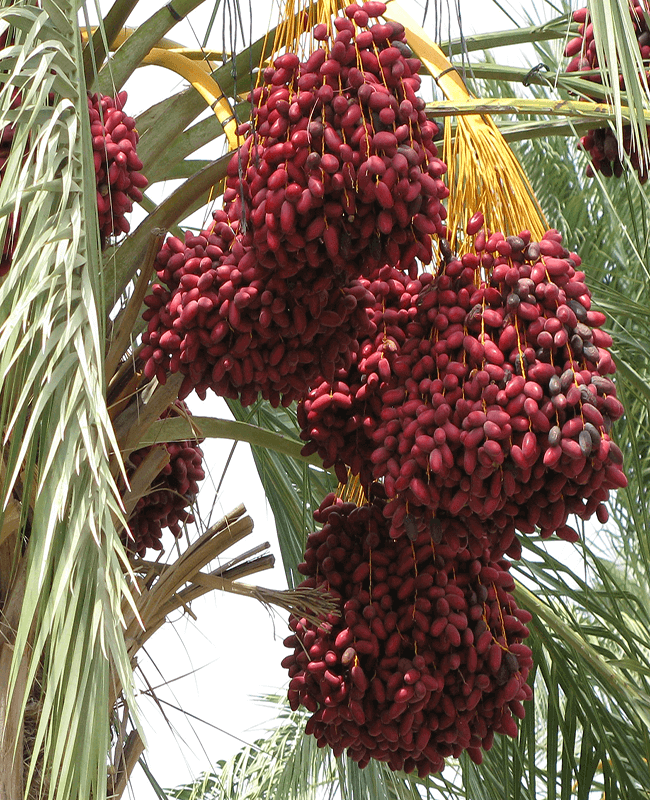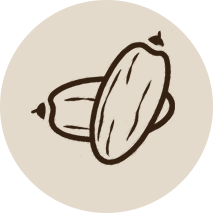About Iran Date

All you need to know about Iran Date.
History

The date palm is believed to have originated in the lands around the Persian Gulf and in ancient times was especially abundant between the Nile and Euphrates rivers. There is archeological evidence of cultivation in eastern Arabia in 4,000 B.C. In later times and it was praised in many ancient civilizations such as the Sumerians, Assyrians, Babylonians, and Egyptians as is evidenced from their drawings and sculptures. Arabs spread dates around northern Africa and into Spain, and dates were introduced into California by the Spaniards in 1765, around Mission San Ignacio.
Iraq has always led the world in date production. Presently, there are 22 million date palms in that country producing nearly 600,000 tons of dates annually.

Botany

The Date palm (Phoenix dactylifera L.) is grown throughout the arid and semiarid regions of the world, particularly in West Asia and North Africa. It is well adapted to the desert environment, where a dry and warm climate is important for fruit maturity and ripening.
Although date palms are mostly cultivated in arid regions; they can also be grown in many other countries such as the Americas, southern Europe, Asia, Africa, and Australia for food or as an ornamental plant.
The date palm, is an angiosperm, a monocotyledonous plant that belongs to the family Arecaceae. This family has 200 genera, of which Phoenix contains 12 of the 1500 species.
Date palm is a dioeciously plant that female and male flowers are born on two separate palms. Pollination involves manually inserting the male strands into the female inflorescence. In order to have high quality yield of date palm, it is extremely important to select suitable male palm for pollination due to the mutagenic effect of date palm pollen on fruit quality & maturity. There are thousands of male and female cultivars distributed throughout date palm-growing countries.
Phoenix height can exceed 20 m and trees survive over a hundred years. Leaves of date palm remain intact to act as heat insulators, so under cultivation old leaves have to be removed manually. Date palms can survive under harsh conditions such as extended drought, high salinity levels and heat Date fruits are oval-cylindrical, 3–7 cm (1.2–2.8 in) long, and 2–3 cm (0.79–1.18 in) diameter, and when ripe, range from bright red to bright yellow in color, depending on variety.
Dates contain a single stone about 2–2.5 cm (0.8–1.0 in) long and 6–8 mm (0.2–0.3 in) thick. Three main cultivar groups of date exist: soft, semi-dry and dry. The type of fruit depends on the glucose, fructose, and sucrose content.
Dates are an important traditional crop in Iraq, Iran, Arabia, and North Africa west to Morocco. Dates (especially Medjool and Deglet Noor) are also cultivated in America in southern California, Arizona and southern Florida in the United States and in Sonora and Baja California in Mexico.
Date palms can take 4 to 8 years after planting before they will bear fruit, and start producing viable yields for commercial harvest between 7 and 10 years. Mature date palms can produce 150–300 lb. (70–140 kg) of dates per harvest season. They do not all ripen at the same time so several harvests are required. To obtain fruit of marketable quality, the bunches of dates must be thinned and bagged or covered before ripening so that the remaining fruits grow larger and are protected from weather and animals
Date palms require well-drained deep sandy loam soils with pH 8-11. The soil should have the ability to hold the moisture. The soil should also be free from calcium carbonate.


Iran Date Nutrition

Dates are high in dietary fiber, carbohydrates, and contain more potassium than bananas! Yet they are virtually fat, cholesterol and sodium free!
A serving of power-packed dates – just 5 to 6 six dates – can provide 3 grams of dietary fiber. That’s 14 percent of your recommended daily value.
A serving of power-packed dates contains 31 grams of carbohydrates, making them a powerhouse of energy. Carbohydrates include 3 grams of dietary fiber and 29 grams of naturally occurring sugars such as fructose, glucose and sucrose to provide quick energy and are readily used by the body. 2. Dates provide essential vitamins and minerals – such as B-complex vitamins, magnesium and iron.
Dates are one of the best natural sources of potassium. Potassium is an essential mineral your body needs to maintain muscle contractions including the vital heart muscle. Potassium is needed to maintain a healthy nervous system and to balance the body’s metabolism. As you consume potassium you excrete sodium, helping to keep blood pressure down.
Dates contain a variety of B-complex vitamins – thiamin, riboflavin, niacin, vitamin B-6 and antithetic acid. These vitamins have a variety of functions that help maintain a healthy body.
One serving of dates provides 4% of the suggested daily intake of magnesium. Magnesium is essential for healthy bone development and for energy metabolism.
One serving of dates contains nearly a third of the Recommended Dietary Allowance for iron. Iron is essential to red blood cell production.

